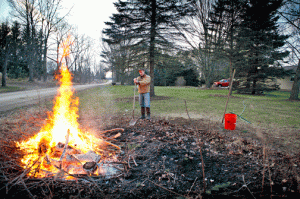How to Handle Demolition Debris
Debris appears as a result of a natural disaster like floodingFlooding is the overflow or accumulation of water in areas t... More, fire, or windstorm, or more frequently, a demolition or construction project. Regardless of the source, debris present on your property is a nuisance and the clutter should be cleared right away. You can simply perform debris removal, but other options include reducing, reusing, and recycling the leftover debris.
Reduce
If you are planning a construction or demolition project, take some time beforehand to consider how to minimize waste and debris afterward. Construction projects are easier because you can take measures to keep the project organized and carefully estimate the number of materials needed. Demolition projects are trickier because the point of demolition is to create wayward debris. However, you can perform deconstruction to minimize the damage.
Deconstruction is often described as “reverse construction” because it involves taking a structureStructure refers to the framework or components of a buildin... More apart in order to salvage as much of its materials as possible. The saved materials are either used for another project, donated, or sold. Materials that can’t be reused should be recycled at the nearest recycling facility.
The deconstruction process does take longer and costs more, but it is worth it if you seek to limit the amount of debris and salvage adequate materials.
 Reuse
Reuse
Reusing leftover waste and debris is rapidly becoming a popular option because there are hundreds of ways to utilized saved materials – if not for you, then for someone else’s use. Clean debris, like soil or concrete, is especially reusable. Materials that are separated and appropriately salvaged can be reused in a variety of different ways.
If you don’t have use for the leftover debris, you can donate the materials for reuse and save thousands of dollars. Reusing waste and debris also helps your environment and community remain healthy.
Recycle
Recycling leftover materials will also save you money because recycling fees are much lower than landfill disposal fees. Recycling is also easy to do because there are thousands of recycling facilities around the country. Recyclable materials include asphalt, concrete, aluminum, wood, corrugated cardboard, and all kinds of metals.
Debris and waste can be recycled in the following ways:
- On-site processing. Recyclable materials are processed and made ready for reuse on-site.
- Source separation. Recyclable materials are separated on-site and sent to the nearest recycling facility.
- Mixed material collection. Recyclable materials and transferred from the job site to a waste facility where they are sorted and sent to a recycling facility.
Remove
If you are unable to reuse, reduce, or recycle your debris, you can have a dumpster rental provider remove the debris to a landfill. However, you must clarify the form of debris you have during the quoting process to make sure it will be accepted. If hazardous materials like asbestos or lead-based paint are present on your property, you will need to remediate and dispose of them before the demolition.
Contact Us
Cleaning up debris from your yard may not seem like an urgent task but failing to remove it can cause damage to your property. Insurance policies often include debris removal and we cooperate with insurance adjustors during the removal process. If you need assistance with yard waste removal, our restoration professionals are available to help.












